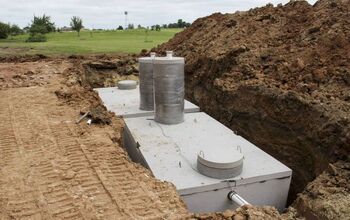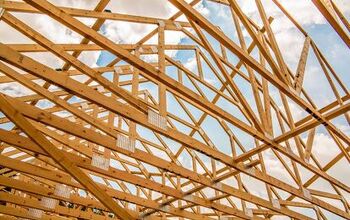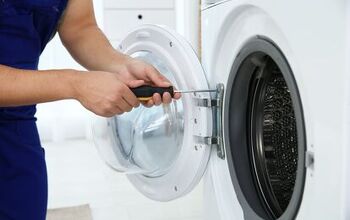9 Different Types of Pry Bars (with Photos)

Becoming a wiz in the world of home improvement means that you need to have a good grip on the tools at your disposal. It’s just a part of the educational side of things. One of the more overlooked tools in your bag is the pry bar. Believe it or not, there’s more than one type of pry bar, too. If you want to get good results, it’s important know what kinds of pry bars are available.
There are several different pry bars that are used in home improvement. The most common pry bar types include the following:
- Sleeve Bars
- Cat’s Claw Bars
- Gooseneck Bars
- Molding Pry Bars
- Digging Bars
- Flat Bars
- Heavy-Duty Pry Bars
Pry bars can be used for a wide range of different actions, including opening up a can, removing nails, or even prying open a car. If you want to get the best tool for the job, it’s time to discuss the different types of pry bars you can get.
A Quick Guide To Each Type Of Pry Bar
Pry bars are often needed for a wide range of different purposes. At first glance, trying to figure out which pry bar you should use is kind of silly. However, each type will have its own use that it does best. Here’s what you need to know.
Sleeve Pry Bars
Also known as alignment bars, these are pry bars that are meant to pry bolts and nuts into alignment. These are typically long, straight bars that are flat on one end and pointy on the other. They almost look like large needles or nails because of their build. These are ideal for jobs that require a lot of leverage but no “grabbing” action.
In some areas, these are also called “pinch bars.” They’re the second-longest type of pry bar that’s currently manufactured for widespread use.
Cat’s Claw Bars
Also known as a nail puller, nail drawer, or typical crowbar, this is a small pry bar that has a flat bottom with a fork-like split at the base. Some have two ends, each with their own claws. This pry bar type is designed to pull up loose nails and similar items. This is one of the smallest types of crowbars on the market, not to mention one of the most common to see on a worksite.
Once in a while, you will find cat’s claw bars that have both ends with “claws,” with one end at a 90-degree angle. This gives you more ways to remove the nails and also can add torque to your pulls.
Gooseneck Pry Bars
In many ways, a gooseneck pry bar is going to look absolutely identical to most other pry bars that you will find on the market. It will usually have at least one end with a “claw,” but may be a dual-end. The difference between a standard claw bar and the gooseneck pry bar is the length of the bar. Gooseneck bars are meant to be far longer, giving you a lot more force behind them. (It’s a physics thing!)
These bars can also be called wrecking bars, primarily because they are frequently used to take things down.
Molding Pry Bars
Are you adding molding to the top of your cabinet, or just switching it out for a new one? You’re going to need a special type of pry bar to help you get the molding off your home. This pry bar is very short and flat, often looking more like a paint scraper than anything else. It’s so petite, you can usually fit it in your pocket.
These are popular among both carpenters and painters, though they can also be occasionally used in car repair. This is great since they tend to require minimal storage.
Rolling Head Pry Bars
Rolling head pry bars can have any tip that you could imagine. However, one end of the bar will have a hammer-like top to it. The end result is a pry bar that looks like a hybrid between a traditional pry bar and a hammer. Some even say this design looks like a cane. The head can have a spiky tip (like a hammer or pike) or a rounded tip, like the ones above do.
These bars are usually used for heavy-duty wrecking as well as for projects that require a lot more leveraging. They’re fairly versatile, which is why you’ll see them in most work sites.
Hooligans
Technically, these aren’t a type of pry bar. However, we are still going to include them because their main purpose is prying stuff apart. Hooligans are tools typically used by firefighters for forcible entry. The pike on one end acts as an ax to chop down doors or gain leverage to pry debris off a person.
On the other hand, the “claw,” is typically used to give people something to pull or to prop up items. This makes them a good double-duty tool.
Digging Pry Bars
These pry bars are a little rarer to find, primarily because most people don’t want to dig using a bar. These are extremely long, straight bars that are meant to dig out embedded objects that are often too heavy to access otherwise. They usually have a claw or spike at one end, and a simple ball handle at the other. With that said, some also have a “shovel” at their ends.
Click up above for a good digging bar on sale.
Flat Pry Bars
These pry bars are exactly what they sound like: they’re flat. They’re meant to be versatile little tools that can remove nails, scrape away paint, and also pull off plywood. These bars are small, flat, but can be slightly longer than a molding pry bar. At times, they are also treated as one and the same. In many cases, people can use a paint scraper as a flat pry bar.
Heavy-Duty Pry Bars
As the name suggests, this is a pry bar that is reinforced with extra metal and comes with a handle at the top of the bar. The handles are meant to be hit with a hammer for deeper prying. If you need to reposition heavy machinery, then you probably should get a heavy-duty pry bar as most others might break.
Unlike other types of pry bars, you can get a heavy-duty pry bar with almost any type of head. So all you need to do is find one that has the structure you need.
Is There A Difference Between A Pry Bar And A Crowbar?
Honestly, most of this is all colloquial. On paper, pry bars and crowbars are identical. With that said, some people find a nuance. A crowbar tends to mean a cat’s claw pry bar more specifically. Pry bars, on the other hand, can refer to a wider range of different models, each with their own heads and tips.
So, a pry bar can be any bar that’s used to pry something open, scrap something away, or dig at something. A crowbar is usually assumed to be used to remove nails. That’s the only difference, and even that is technically unofficial.
What Should You Look For In A Pry Bar?
If you’re in the market for a pry bar, then you’ve got a lot of options to choose from. Virtually every major company from Husky to Milwaukee makes a set of pry bars. However, that doesn’t mean you should get any pry bar you find off a shelf. When you’re searching for a new bar, make sure to take these factors into account:
- Type. While all pry bars can technically get used for purposes outside the ones intended for them, the truth is that it’s not always that smart an idea to assume it’s a “one size fits all” deal. A hooligan will not scrape paint away as well as a flat pry bar will, after all. Match the pry bar type for its intended use.
- Material. A pry bar with flimsy material will not last for very long. Your ideal pry bar will be carbon-heavy and/or made of steel. The more reinforcements it has, the better. If your bar has a handle at one end, make sure it’s not made of brittle plastic. Otherwise, you might find yourself in need of a new bar sooner than you think.
- Brand. Are we going to say that brand makes all the difference? Not quite. It’s possible to find a third-party pry bar that does the trick. However, having pry bars that come from an established brand often means that you will get a good warranty. Should anything happen to them, you can get them replaced in a pinch.
- Length. A long pry bar is usually good for larger projects, especially when you need a ton of leverage. Shorter ones are best for detailed work as well as for small projects or paint removal. If you want a “pocket pryer” for handyman work, sticking to short stuff is better. Not sure what bar size you need? There are sets with multiple lengths if you so choose.
- Budget. In an ideal world, you would have an unlimited budget. In reality, you still need to figure out what is the best bang for your buck. If you’re able to get a high-budget, brand-name pry bar set on sale, all the better.
An Important Note About The Pry Bar That You Get
No matter what pry bar you have, it’s important to remember that proper use and storage of your pry bars is vital. Even if they are high-quality bars, they still need to be maintained. To get the most out of your pry bar’s lifespan, make sure to do the following:
- Keep your pry bars clean. Like with any tool, a well-cleaned pry bar is a happy pry bar. Wipe them down and avoid leaving them in moist areas. This will prevent them from rusting.
- Make sure to file down the pointed areas. If you have a cat’s claw or thin bar, you may lose some of the sharpness that helps you pry stuff with more ease.
- If your bar starts to bend, remove it from the item you’re prying immediately. It is rare, but it is absolutely possible for a pry bar to snap. If it does, you could end up with a major mess, not to mention an injury from flying pieces of metal.
- Use common sense. Jumping up and down on a pry bar is a bad idea, mmkay?
Related Questions
What can you use instead of a pry bar?
This all depends on what you are trying to do. In many cases, a nail remover, staple remover, or paint scraper can work. Larger projects, particularly those in the backyard, can usually be done with sharpened poles or shovels. If you want to get a simple job done, like prying a lid off a paint bucket, you can usually grab a spoon or fork to pry it open with.
Why is it called a “crow bar?”
The roots of this moniker are shrouded in mystery, but there are several explanations for it. The most commonly accepted explanation is that the v-shaped grooves of a claw bar tend to make the bar look like a crow’s foot. Others believe it has roots in sailing terms (found in a crow’s nest) while still more have their own takes.What we *do* know, though, is that the term was traced to the 1400s. So, it’s a pretty old term.
Is carrying a crowbar illegal?
It all depends on where you live and the purpose the bar has. Many states have laws against carrying a crowbar on your person if it is being brandished as a weapon or doesn’t appear to be for workspace use. However, actively carrying it from one job site to another in a toolbox is rarely ever a problem.To find out how to transport your crowbars and pry bars, it’s best to refer to your local and state laws. If no law exists, you can carry it as you wish.

Ossiana Tepfenhart is an expert writer, focusing on interior design and general home tips. Writing is her life, and it's what she does best. Her interests include art and real estate investments.
More by Ossiana Tepfenhart

















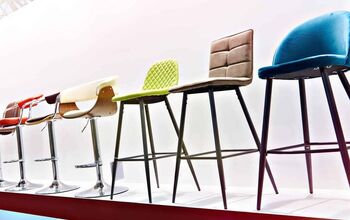

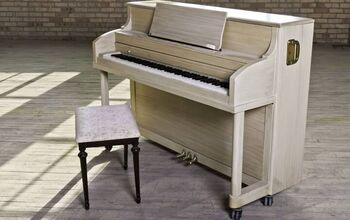



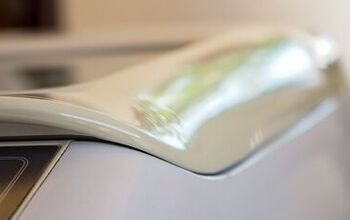

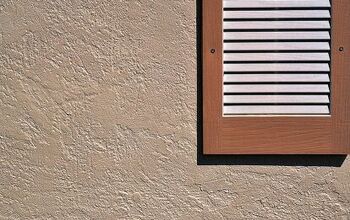
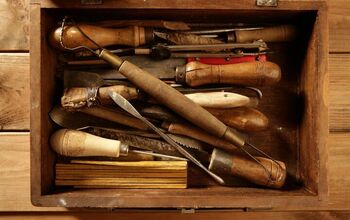

![Standard Dining Room Table Dimensions [for 4, 6, 8, 10 and 12 People]](https://cdn-fastly.upgradedhome.com/media/2023/07/31/9074335/standard-dining-room-table-dimensions-for-4-6-8-10-and-12-people.jpg?size=350x220)

